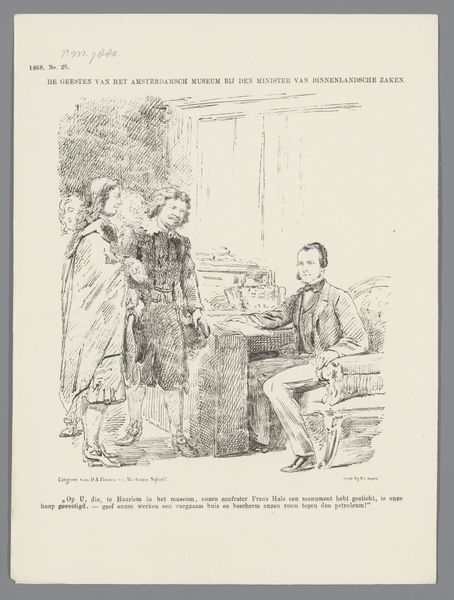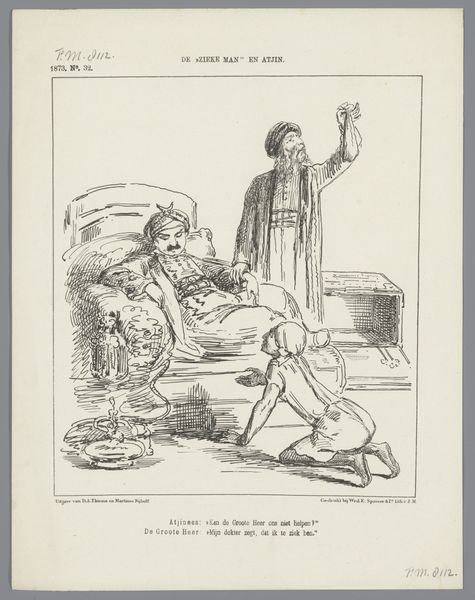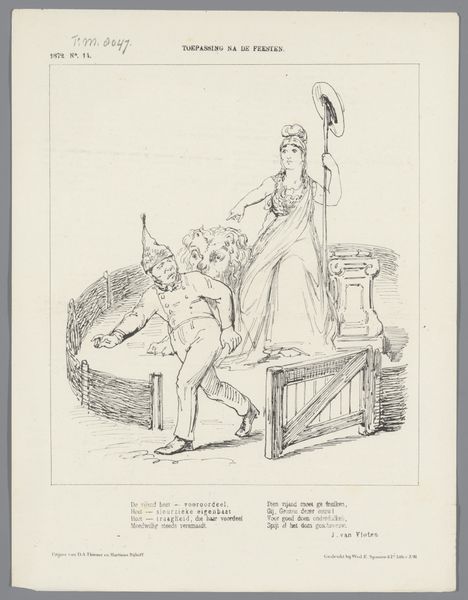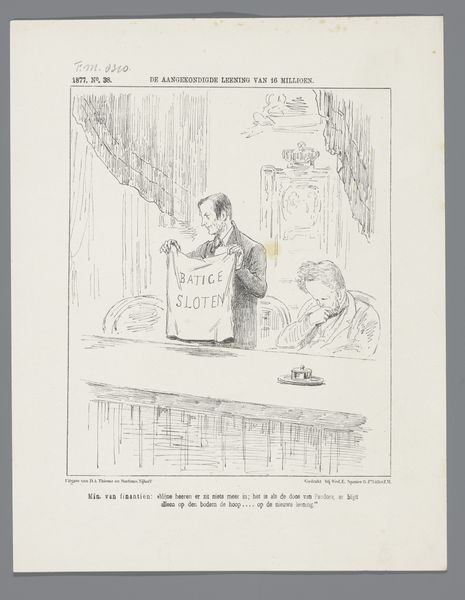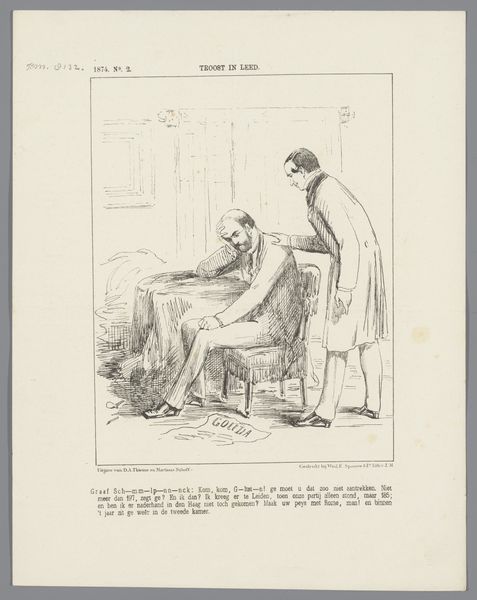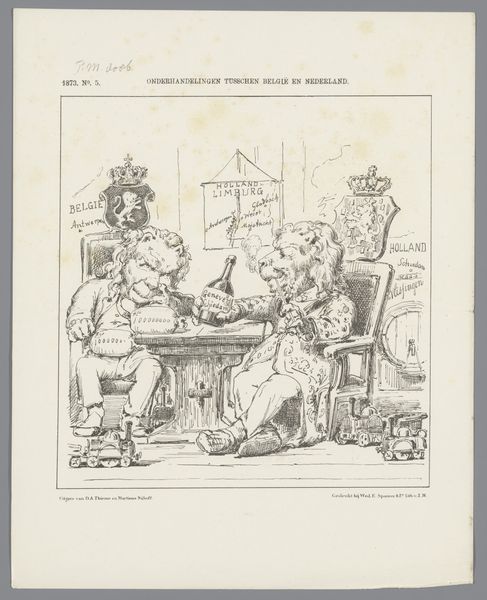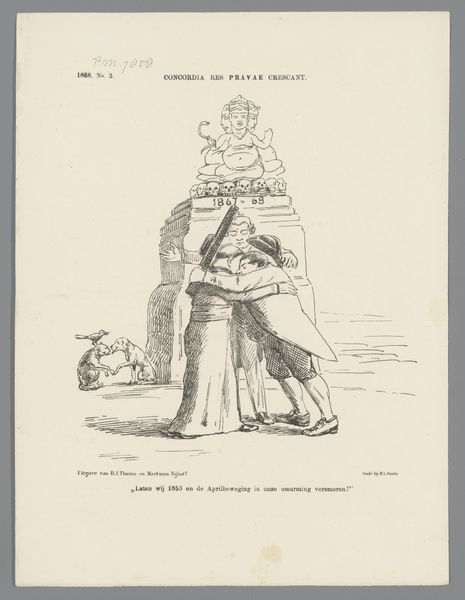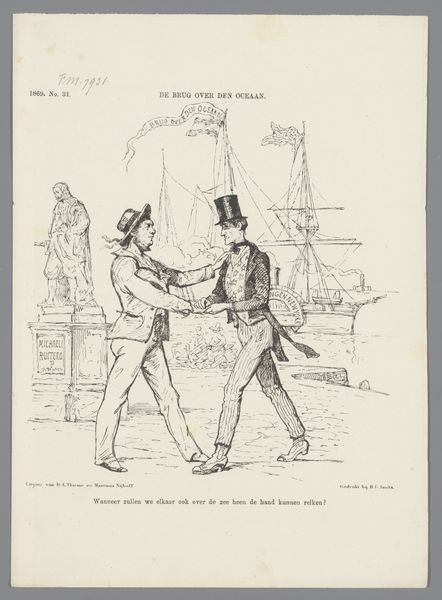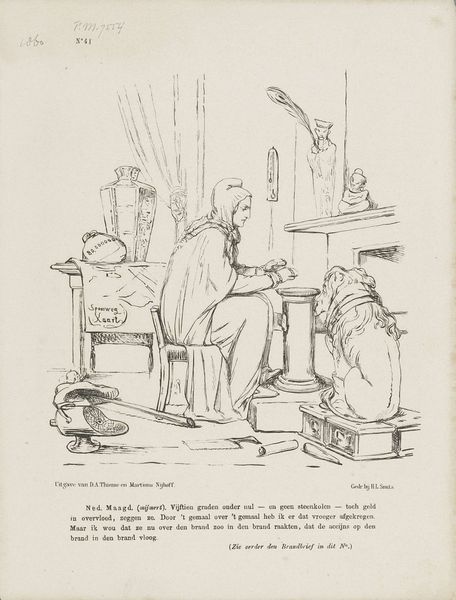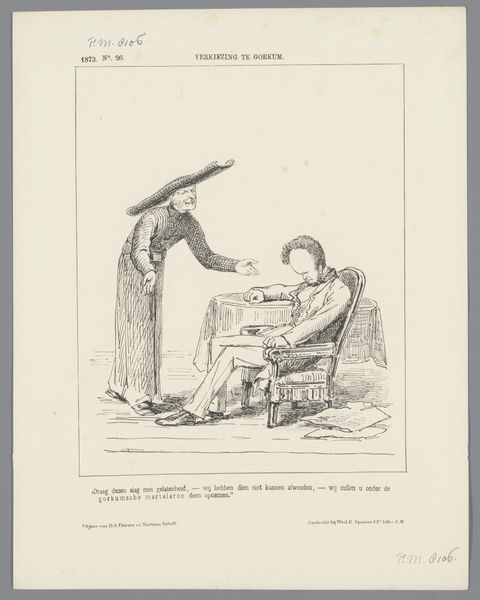
drawing, print, pen
#
portrait
#
drawing
#
comic strip sketch
#
quirky sketch
# print
#
caricature
#
sketch book
#
personal sketchbook
#
idea generation sketch
#
sketchwork
#
ink drawing experimentation
#
sketchbook drawing
#
pen
#
history-painting
#
storyboard and sketchbook work
#
sketchbook art
Dimensions: height 275 mm, width 215 mm
Copyright: Rijks Museum: Open Domain
Editor: This drawing is called "Spotprent op de anti-revolutionaire partij, 1863," or "Cartoon of the Anti-Revolutionary Party, 1863" by Johan Michaël Schmidt Crans. It looks like a pen and ink drawing, maybe even a print. The image is quite striking and obviously political. I wonder, how do you interpret this work? Curator: This piece speaks volumes about the political landscape of 1863 Netherlands. Consider the symbolism: a woman force-feeding "anti-revolutionair pap" or anti-revolutionary porridge to a baby wearing a crown. What does this visual metaphor suggest about the artist's perspective on the anti-revolutionary party and their methods of indoctrination? Editor: So, the "pap" represents forced ideology? Is the baby supposed to be the future King, then? Curator: Precisely! And the woman becomes an allegorical figure of conservative authority, spoon-feeding potentially harmful doctrine. It’s essential to explore the socio-political context. The anti-revolutionaries opposed liberal reforms. How does knowing this inform your understanding of the print's message? Editor: It casts a more critical light. It’s not just a neutral observation but a pointed critique of power and influence. Curator: Exactly. Consider also the artist's choice to use caricature. How does that impact the viewer's engagement with the subject matter, and could the intent be persuasion or something else? Editor: Caricature emphasizes flaws. By exaggerating features, the artist makes the figures appear ridiculous, possibly swaying public opinion against the party. It’s pretty subversive for its time, I think. Curator: Indeed. Art like this serves as a potent reminder that visual culture can act as both a mirror reflecting societal tensions and a weapon challenging the status quo. It’s about recognizing whose voices were amplified, and conversely, who were marginalized. What resonates most with you in that light? Editor: The idea of art as a form of resistance, a way to question and potentially disrupt dominant narratives. Curator: Precisely! Keep questioning those narratives and revealing what’s hidden!
Comments
No comments
Be the first to comment and join the conversation on the ultimate creative platform.
